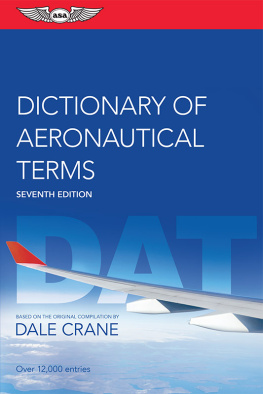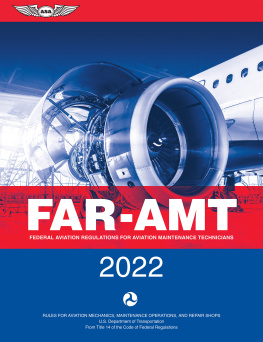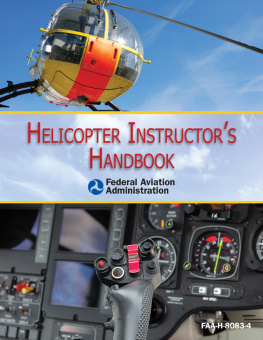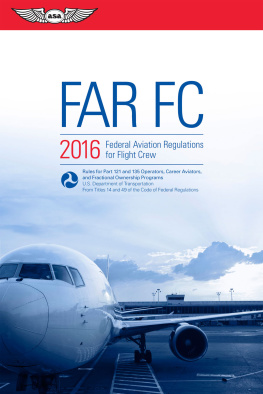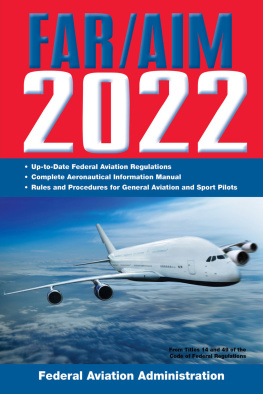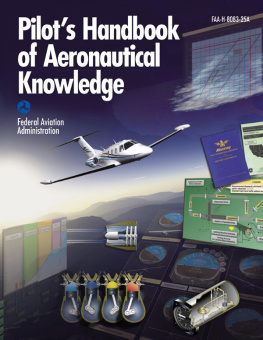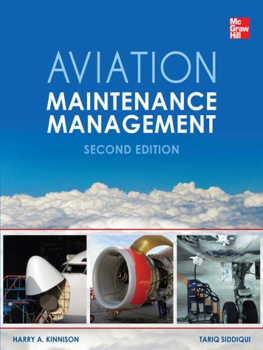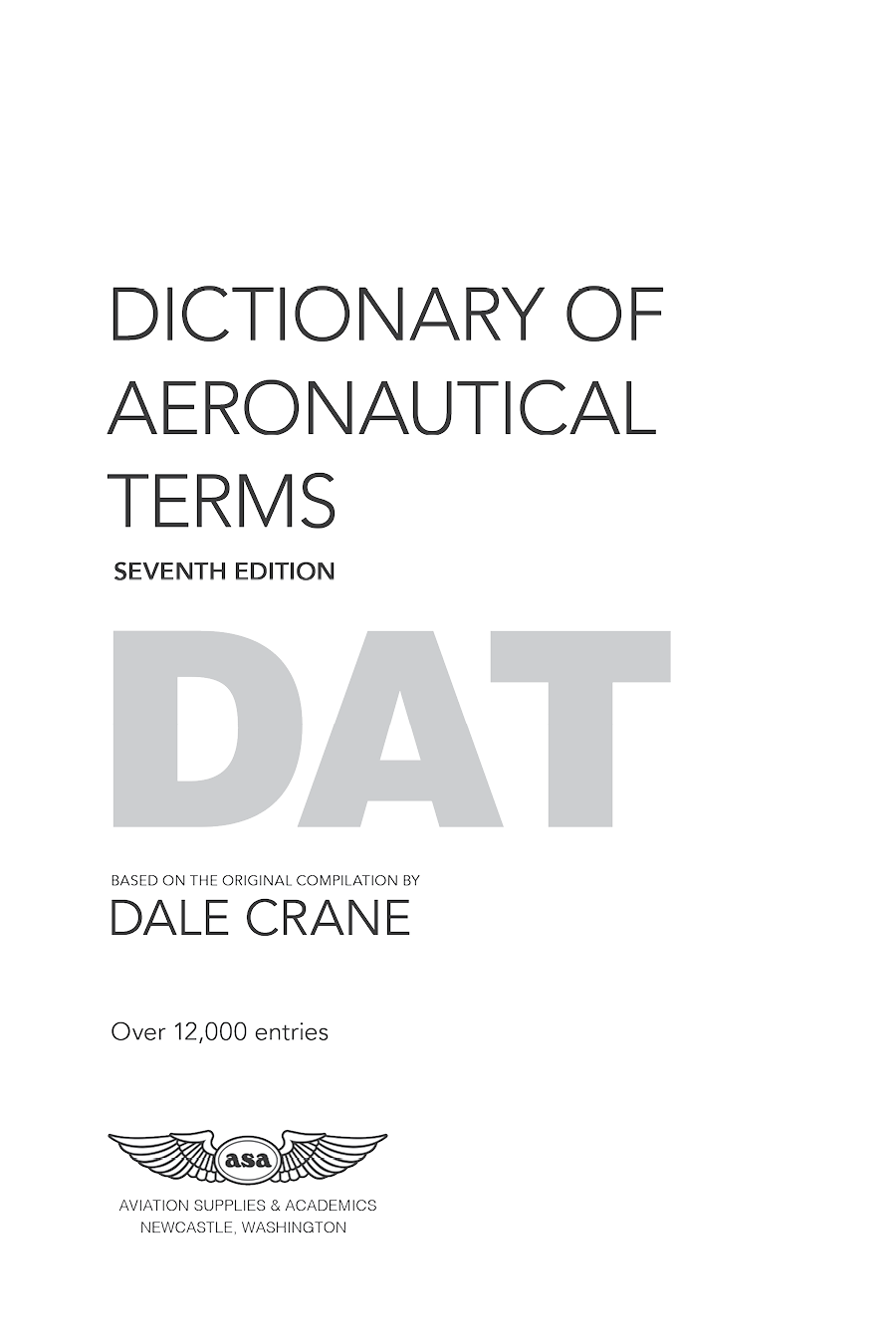
Dictionary of Aeronautical Terms
Seventh Edition
by the ASA Editorial Staff, based on the original compilation by Dale Crane
Aviation Supplies & Academics, Inc.
7005 132nd Place SE
Newcastle, Washington 98059
19912020 Aviation Supplies & Academics, Inc.
Seventh edition published 2020.
See the ASA website at asa2fly.com/reader/dat for the Reader Resources page containing additional information and updates relating to this book.
All Rights Reserved. No part of this publication may be reproduced, stored in a retrieval system, or transmitted in any form or by any means, electronic, mechanical, photocopy, recording, or otherwise, without the prior written permission of the copyright holder. While every precaution has been taken in the preparation of this book, the publisher assumes no responsibility for damages resulting from the use of the information contained herein.
None of the material in this book supersedes any operational documents or procedures issued by the Federal Aviation Administration, aircraft and avionics manufacturers, flight schools, or the operators of aircraft.
ASA-DAT-7-EB
ISBN 978-1-64425-057-0
Additional formats available:
Print Book ISBN 978-1-64425-056-3
Kindle ISBN 978-1-64425-058-7
eBook PDF ISBN 978-1-64425-059-4
Preface to the Seventh Edition
There is no aspect of modern technology that encompasses so many disciplines as aviation: physics, chemistry, aerodynamics, thermodynamics, structural and fluid mechanics, electronics, acoustics, reciprocating and turbine engine technology, meteorology, navigation, and human factors. In addition, aviation is governed by an extremely complex set of federal regulations.
Each discipline and regulation has its own unique vocabulary, and it is difficult to find a single reference source that includes terms specific to the aviation application of these fields. To this end, ASAs editors have searched aviation periodicals, aviation-related textbooks, service manuals, manufacturers literature, engineering reports, military training manuals, and especially all of the publications produced by the FAA for applicable terms.
The seventh edition of ASAs Dictionary of Aeronautical Terms is more than a lexicon; it explains as well as defines over 12,000 accurate, aviation-specific terms and includes nearly 500 illustrations and four appendices. Expanded coverage for this edition reaches into terms associated with human factors, aerodynamics, air carriers, and other developments in the industry, plus changes to regulations and procedures including ADS-B and drone operations. Especially helpful is the list of acronyms and abbreviations in the Appendix; for an unfamiliar acronym go there first to find the fully spelled-out term, and then look up the definition in the main text.
The officially recognized definitions for many of the aviation terms are included in 14 CFR Part 1 Definitions and Abbreviations. In all instances where a definition in this dictionary is taken directly from this document, it is identified by the prefix 14 CFR Part 1:, and the definition is in quotation marks. In addition, there are now terms from 14 CFR 401.5, Commercial Space Transportation Definitions and these are identified in the same manner.
The information contained here is as accurate and up-to-date as it has been possible to make it, but because of the speed with which changes are taking place in aviation, some of the terms are taking on new meanings, and their relative importance is changing. Because of this, and because of ASAs dedication to working together for excellence, we will appreciate any criticism, or suggestion you have that will make subsequent revisions of this work more useful for you.
Editors Note: If you do not find a word or acronym you were looking for in the Dictionary of Aeronautical Terms, please email ASA at ) to check for updates as new terms and definitions are collected in between book printings.
A alfa
AAM (air-to-air missile). A missile carried on an aircraft for use against other aircraft. The missile is guided to its target by radar or infrared sensors.
A&B hydraulic brake system. A form of backup brake system used in some large aircraft multiple-disk power brake installations. Wheels using the A&B system have several small actuating cylinders built into the brake housing. Half of the cylinders are actuated by fluid from the A-hydraulic system and the others by fluid from the B-system. The brakes operate normally with either system.
A&P mechanic. A person who holds an aircraft mechanic certificate with both the airframe and powerplant ratings. This certification is issued by the Federal Aviation Administration under the provisions of 14 CFR Part 65.
Mechanic certification with an A&P rating is now referred to as Aviation Maintenance Technician (AMT) certification.
AAR (airport acceptance rate) (air traffic control). A dynamic input parameter specifying the number of arriving aircraft which an airport or airspace can accept from the ARTCC per hour. The AAR is used to calculate the desired interval between successive arrival aircraft.
AAS (airport advisory service). A service provided by FAA Flight Service Stations located at airports not served by a control tower.
AAS provides information to arriving and departing aircraft concerning wind direction and speed, favored runway, altimeter setting, pertinent known traffic, pertinent known field conditions, airport taxi routes, traffic patterns, and authorized instrument approach procedures. AAS information is advisory in nature and does not constitute an ATC clearance.
abampere. A basic unit of electrical current in the electromagnetic-centimeter-gram-second system. One abampere is equal to 10 amperes in the absolute meter-kilogram-second-ampere system. The abbreviation for abampere is aA.
A-battery. A dry-cell battery used in vacuum tube radios to supply power to the heaters, or filaments, of the tubes.
A-batteries usually have a voltage ranging between 1.5 to 6.0 volts and are capable of supplying a reasonable amount of current.
abbreviated briefing. In meteorology, this is a shortened weather briefing to supplement the widely-disseminated aviation weather data.
abbreviated IFR flight plan (air traffic control). An authorization by ATC requiring pilots to submit only that information needed for the purpose of separation and control. An abbreviated flight plan includes only a small portion of the usual IFR flight plan information which may be only aircraft identification, location, and pilot request.
Abbreviated flight plans are frequently used by aircraft which are airborne and desire an instrument approach, or by aircraft which are on the ground and desire a climb to VFR-On-Top.
abcoulomb. A basic unit of electrical charge in the electromagnetic-centimeter-gram-second system. One abcoulomb is equal to 10 coulombs in the absolute meter-kilogram-second-ampere system. The abbreviation for abcoulomb is aC.
abeam. A relative location approximately at right angles to the longitudinal axis of an aircraft. When an object is beside the aircraft, it is said to be abeam of it.
abeam fix.

